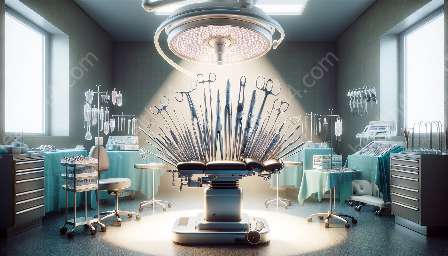Healthcare technology has evolved significantly over the past few decades, and patient monitors have become indispensable tools in modern medical settings. These devices play a crucial role in monitoring a patient's vital signs, providing essential data to healthcare professionals, and enabling timely interventions. In this comprehensive topic cluster, we will delve into the significance of patient monitors, their compatibility with surgical instruments and other medical devices, and their impact on patient care.
Understanding Patient Monitors
Patient monitors are electronic medical devices that track a patient's vital signs and other important health metrics. These devices are commonly used in hospitals, clinics, ambulances, and other healthcare facilities to continuously monitor patients' conditions. Patient monitors typically measure vital signs such as heart rate, blood pressure, oxygen saturation, and respiratory rate, providing real-time data to healthcare providers.
The Role of Patient Monitors
Patient monitors serve as a critical link between patients and healthcare professionals, as they continuously track and display vital data. This enables healthcare providers to identify potential health issues, monitor the effects of treatments or medications, and intervene promptly in case of any abnormalities. Additionally, patient monitors can be customized to meet the specific monitoring needs of individual patients, making them versatile and adaptable in different healthcare scenarios.
The Impact of Patient Monitors on Healthcare
The use of patient monitors has significantly improved patient care and safety. By providing accurate and real-time data, these devices help healthcare professionals make informed decisions, ensure timely interventions, and prevent potential complications. In surgical settings, patient monitors play a crucial role in monitoring patients under anesthesia and during post-operative recovery, contributing to better surgical outcomes and patient recovery.
Compatibility with Surgical Instruments
Patient monitors work synergistically with surgical instruments to ensure comprehensive patient care. During surgical procedures, patient monitors allow healthcare providers to closely monitor a patient's vital signs, anesthesia levels, and overall health status. This integration of patient monitors and surgical instruments allows for seamless communication and coordination among the surgical team, leading to enhanced patient safety and improved surgical outcomes.
The Advancement of Medical Devices and Equipment
As technology continues to advance, patient monitors, surgical instruments, and other medical devices and equipment have become more sophisticated, accurate, and user-friendly. The integration of advanced features such as wireless connectivity, data analytics, and remote monitoring capabilities has further enhanced their utility and effectiveness in healthcare settings. These advancements have resulted in more precise monitoring, improved patient outcomes, and greater efficiency in healthcare delivery.
Conclusion
Patient monitors, surgical instruments, and medical devices are integral components of modern healthcare, working together to ensure the highest standards of patient care. Their compatibility and collaboration contribute to the effective monitoring, diagnosis, and treatment of patients, ultimately leading to improved health outcomes and patient satisfaction. As technology continues to evolve, the role of patient monitors in healthcare will continue to expand, further revolutionizing the way we monitor and care for patients.


